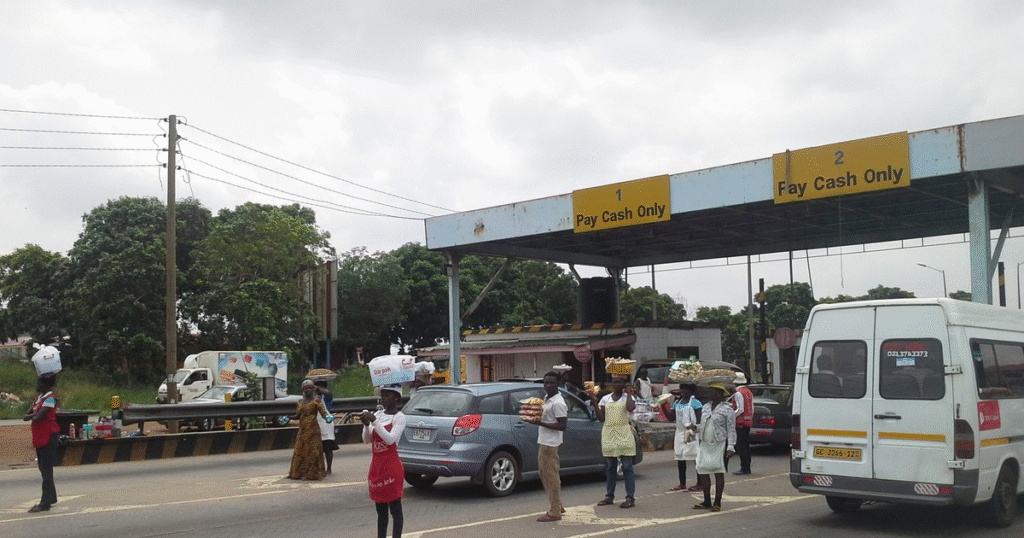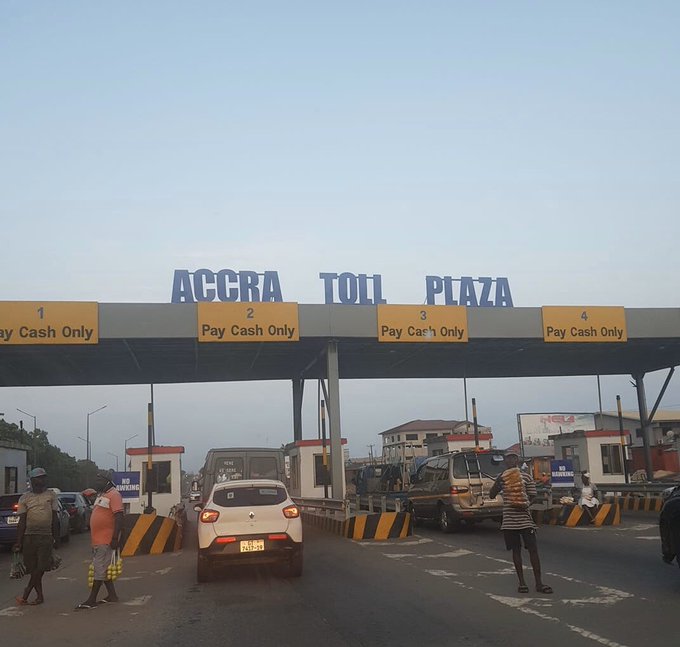Ghana is set to roll out a digital toll system, where drivers will pay their road tolls without human interference, thanks to the Ghana card.
In his speech delivery at the 9th Ghana CEO summit on the theme, “Transforming business and governance for a sustainable futuristic economy”, President John Dramani Mahama cited Ghana’s current technological advancements, among which the national identity card (Ghana Card) has been linked to several services, including driver’s licenses and vehicle registration, and revealed how these advancements will be utilized to drive change in the country.

How the new toll system will work
The President shared a very stress-free digital process that will allow drivers to pay their tolls seamlessly and fast. According to him, upon reaching a toll gate, a photo of the car will be captured by a camera, and the bills sent to the drivers’ mobile money for them to approve and issue payment.
“If it’s one cedi, if you cross the East Legon bridge, a picture of your car is taken and a bill will be sent to you and deductions made through your mobile money or your bank account,” President Mahama said.
This simple procedure aims to eliminate the traffic physical road tolls caused on the roads, and also to leverage the digital infrastructure that the country has.
When and how road tolls began
The Tolls Act, 1965 (Act 314) is a law aimed at regulating the payment of tolls on roads and bridges. It allows the Minister to declare a road as a toll road or bridge, fix tolls for passengers, vehicles, animals, or goods carried on a ferry, and exempt certain classes from toll payment. The Act was issued as the Tolls Decree, 1973 (N.R.C.D. 153), and was notified in the Gazette on February 16, 1973.

Motor vehicles belonging to the Armed Forces, Police Service, Fire Service, Prisons Service, diplomatic missions, government and mission hospitals used as ambulances, and the Ghana Red Cross Society are exempt from toll payment.
A toll house, barrier, and notice of tolls were required at the approaches to a toll road, toll bridge, or toll ferry. A notice board showing the prescribed tolls was erected near the gate or barrier. There was also a toll-keeper who kept a register for motor vehicles owned by the Government or traveling on Government business.
Road tolls scraped
The road toll system was a major source of domestic revenue mobilization, as it generated approximately 78 million cedis a year.
However, the government, in 2022, scrapped the road tolls, announcing that motorists who paid tolls on public roads and bridges were no longer required to pay tolls after the 2022 budget was approved. The Finance Minister stated that the tolling system played a crucial role in funding the expansion of Ghana’s road infrastructure, but it was creating unpleasant situations, such as unhealthy market centres, heavy traffic, and pollution.

Aside from the loss of revenue by the government, the elimination of road tolls also led to the unemployment of toll collectors, who were mostly the physically challenged, and vendors who sold in traffic to earn a living.
Many, including the Ghana Highway Authority, called for the reintroduction of the toll system to address fiscal challenges and to help maintain the roads.
What the reintroduction of road tolls means for Ghana
The new era of the road toll system will bring fresh and renewed hope for Ghanaians, as these monies are used to develop the country in many other ways aside from maintaining roads. It will also bring a convenient and streamlined experience for drivers and passengers alike. The digitalization of this venture will avoid traffic congestion on our roads and eliminate any human involvement, which can make the process liable to illegal and unnecessary interference.




